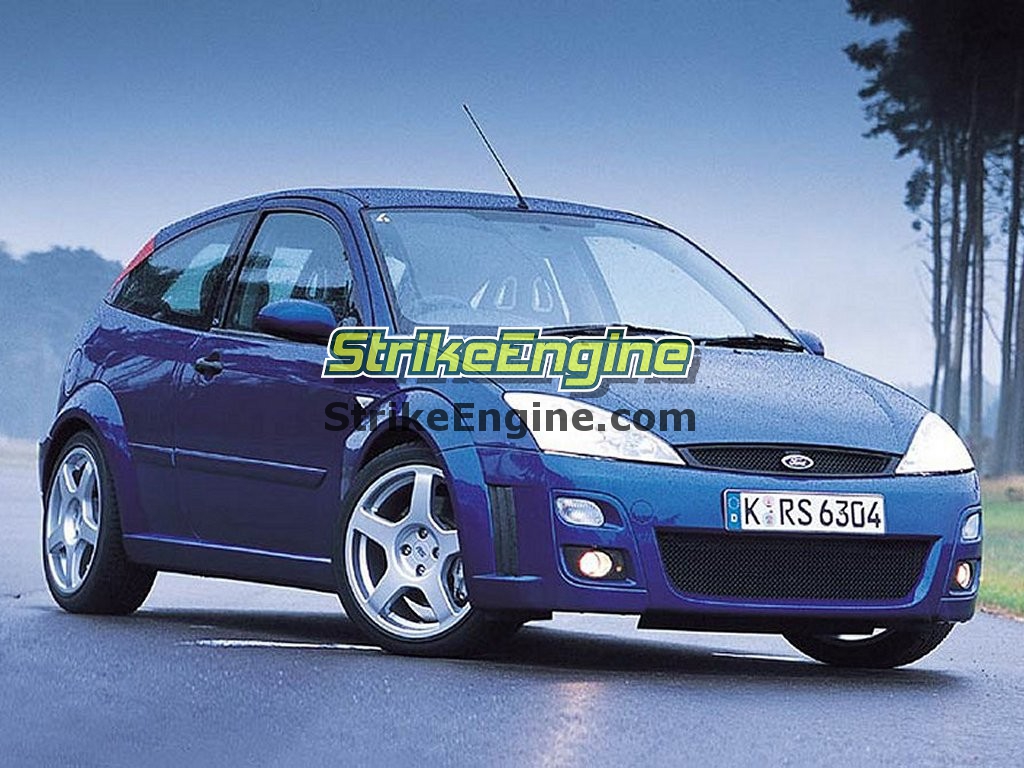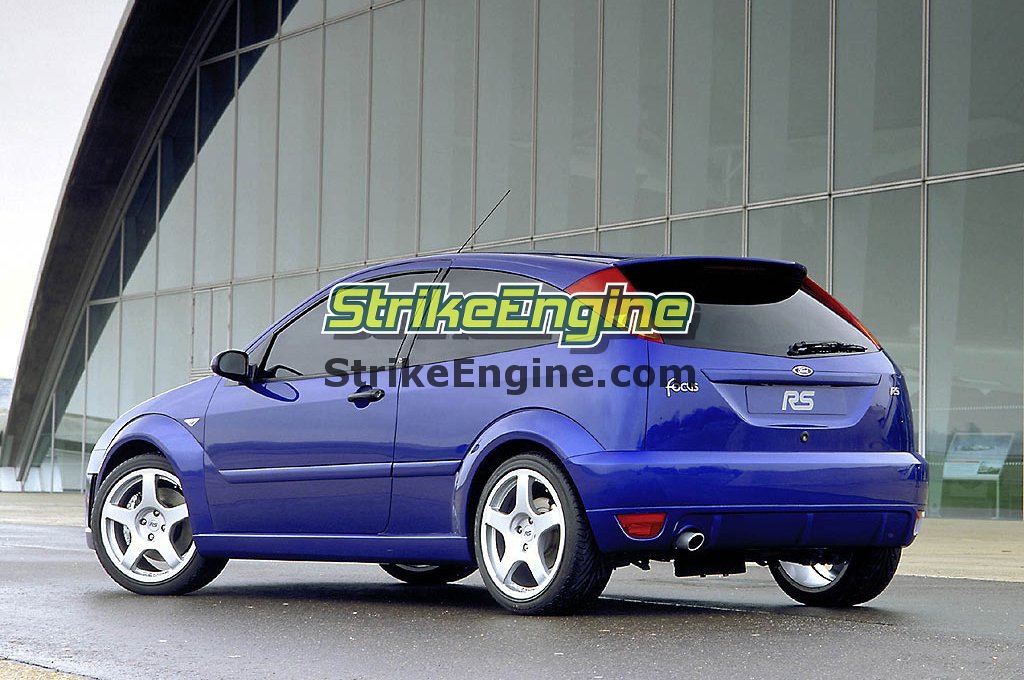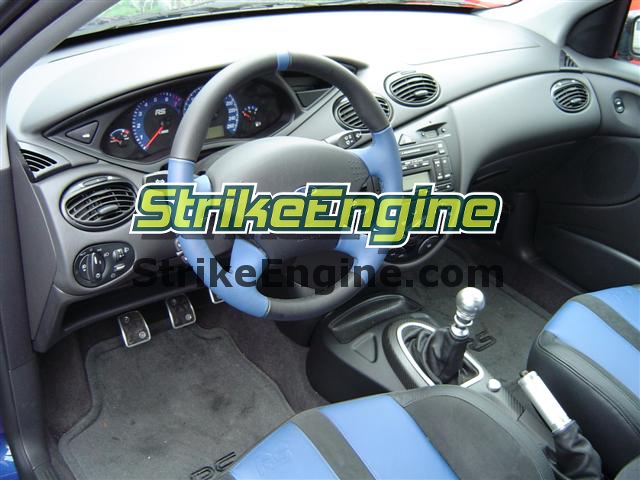
See also:
Ford Focus Tuners
Ford Focus Body Kits
High Performance Car
Insurance
Tuners - Garages - Dealers/Shops

-Car Dealers - Japanese Car Importers
-Car Dealers - Porsche
-Engine
Builders
-Performance
Parts - Civic
-Performance
Parts - Ford
-Performance Parts - Honda
-Performance
Parts - Japanese (General)
-Performance
Parts - Nissan
-Performance
Parts - Nissan 200SX
-Retailers/Dealers
- California USA
-Retailers/Dealers
- General
-Retailers/Dealers
- Non-Japanese
-Rolling Road Manufacturers
-Rolling
Roads and Dynomometers
-Rolling Roads UK South
-Tuners - Audi
-Tuners - BMW
-Tuners
- Ford
-Tuners
- Ford Focus
-Tuners
- Honda
-Tuners
- Japanese Cars
-Tuners - Mazda
-Tuners - Mazda RX-7
-Tuners
- Mazda RX-8
-Tuners - Mercedes
-Tuners - Mini
-Tuners - Mitsubishi EVO
-Tuners
- Nissan
-Tuners
- Nissan Primera
-Tuners - Non Japanese Cars
-Tuners - Porsche
-Tuners - Seat
-Tuners
- Subaru
-Tuners - Toyota
-Tuners - VW
Tuning Guides & Information

-Air
filters - heat shields. CAI intake test
-Audi S4 Tuning Guide
-BMW E36 Tuning Guide
-Car Tuning, A Beginners Guide
-Engine Tuning - General. General engine tuning information
-Ford Cosworth YB Tuning
-Ford Escort Cosworth T25 Tuning Guide
-Ford Focus ST Tuning Guide
-Ford RS Turbo Series 1 Tuning Guide
-Ford RS Turbo Tuning vs Acceleration
-Ford Zetec S/SE Tuning Guide
-Honda
Civic Type R Tuning vs Acceleration
-Honda K20 Tuning Information
-Honda
S2000 Performance Part Power Test
-Limited
slip differential (LSD) - How it works
-Mazda
MX-5 / Miata Tuning Guide
-Mazda MX-5 MK3 Performance Part Power Test
-Mazda
RX-7 Performance Part Power Test
-Mitsubishi EVO 9 Performance Part Power Test
-Nissan 240SX Performance Part Power Test
-Nissan 350Z Performance Parts Guide
-Nissan
Cefiro A31 tuning - Part interchangability and engine swaps
-Nissan Skyline Tuning Specs vs Power
-Nissan
Sunny GT-R tuning - Specs vs acceleration and 1/4 mile times
-Performance Air Filters - Why bigger is better
-Pipercross
Viper dyno test - Standard filter vs Viper filter power outputs
-Saab 9000 Tuning Guide
-Subaru Impreza Tuning Pack Test
-Toyota 4AGE History
-Turbo
Kit Group Test
-Vauxhall XE RWD Conversion
-Volvo 740/940 Tuning Guide
Engine Parts - Mechanical

-Air
Filters - Induction Kits
-Alloy Products
-Ball Bearings
-BOV
-Cables
-Camshafts Performance
-Clutch
- Flywheel
-CNC Machining
-Connecting
Rods
-Cooling Equipment
-Crankshafts
-Cylinder Heads - Road/Race (Coming Soon)
-Exhaust Manifold Design
-Exhaust Manifolds
-Exhaust Systems Performance
-Exhaust Systems Performance - Audi
-Fastners, Catches, Pins, Bolts
-Forged
Pistons
-Fuel Systems/Injectors
-Hydraulic Systems/Hoses/Connectors
-Intercoolers
-Mechanics/Pit Lane Equipment Tools
-Metal Suppliers
-Nitrous Oxide Systems
-Piston Rings
-Pulleys Lightweight
-Radiators, Aluminum/Performance
-Rapid Prototyping
-Fuel
- Lubricants
-Engine Parts and Services
-Seal & Gaskets
-Silicone Hoses
-Sports Cats
-Superchargers
-Surface Coating/Finishing
-Thermal Spacers (Coming Soon)
-Turbo
- Turbo Conversions and Turbo Manufacturers and Dealers
-Valves
- Engine
-Valve Springs
-Wastegates
Engine Parts - Electronic

-Battery Racing/Performance
-Boost
Controllers
-CAD CAM Software
-Chips, 3D ECUs and Engine Management
-Data Loggers Sensors
-Diagnostics
-Electrical
Components
-Fuel Injectors
-Gauges
-Ignition
Components
-Individual Throttle Bodies
-Schools/Training
Footwork - Transmission

-Alloy
Wheels
-Alloy Wheel Repair
-Big Brake Kits
-Brake
Calipers
-Brake
Disc -Performance
-Brake Lines
-Brake
Pads - Performance
-Brakes
-Close Ratio Gear Kit
-Clutch
and Flywheel
-Coilover Suspension
-Dampers
-Drive Shafts
-Flywheels
-Limited
Slip Diff
-Seat Brackets
-Sport Seats
-Springs
- Race
-Strut Bars/Strut Braces
-Suspension Bushes
-Suspension
Kits Performance
-Suspension Kits Subaru Impreza
-Suspension Setup & Alignment
-Suspension and Steering Parts
-Transmissions
- Parts - Services
-Tyres
- Tire Manufacturers (Motorsport)
-Need a web presence?
-StrikeEngine Book Store (USA)
Top
Gear Alfa 147 GTA vs Golf R32 vs Focus RS
(Standard)
|
Layout |
Front Engined,
Front Wheel Drive |
|
Engine |
In Line
4Cylinder, 1998cc, 16v, Turbo |
|
Power |
212bhp@5500rpm |
|
Torque |
229lbs/ft@3500rpm |
|
Suspension |
Front:
MacPherson Struts, Coil Springs, Anti Roll Bars. Rear: Multi Link, Coil Springs, Anti Roll Bar |
|
Tyres |
225/40R18
Michelin Pilot Sport |
|
Power to Weight |
169bhp/Ton |
|
0-60mph |
5.9secs |
|
Top Speed |
144mph |
|
Price When New |
19,995 |

Background
The Ford
Focus RS was released back in 2002 it came with a host of features not
found on other Focus
models and is capable of a very competent performance on the race track.
The steering is gives plenty of
feedback and the car displays extremely good body control.
The Focus RS was launched in October of 2002 with Ford stating that they
would build 4501 examples. Of
this number approximately 3000 came to the UK. The Focus RS models were
individually numbered but
the last cars, from 2500 onwards,were not always numbered in sequence.
The Focus RS was only available in one colour, Imperial Blue and the RS
was not available with any extra
options.
However there are two phases of Focus RS the "Phase 2" cars had
additional stitching at the base of the
front seats to prevent them sagging (this can be added retrospectively
by a Ford Dealer) a pink grommet
on the throttle cable (which reduces vibration), engine start written
around the starter button and the
removal of the dimmer on the clock.
More importantly the Phase 2 cars came with an updated dated
engine map.
The first map being called
AE, the more recent, AF. The new map improved fuel economy, drivability
and starting. Ford dealers are
able to upgrade the early cars to the more recent map but we don't know
of the costs involved. When
buying a Ford Focus RS be sure that you ask the seller if this map
upgrade has been carried out.
Ford states that the "minimum" power output of the 2 litre power unit to
be at least 212bhp with some
owners finding outputs to be as much as 230bhp.
Check Points
History is important with the Focus RS
as with all high
performance cars.
In addition to an up to date servicebook it is important to find out how the car has been used. Cars which
have been used regularly for track
work will obviously feel more sloppy than examples which have been used
as second cars. The latter
situation being the ideal car to buy. The good news with the Focus RS is
that they are very reliable cars
with very little going wrong with them.

Engines
The
engine in the Ford Focus RS is badged as a Duratec although the engine
is actually a Zetec E unit as
found elsewhere in the Ford Focus range. The engine is strong with no
failures being recorded on
unmodified examples and the same can be said for the Garrett GT 2560 SG
turbo. Due to the engines
tunability there are a large number of
modified cars
on the road, with the standard engine internals and
turbo being able to cope with up to 280bhp. The Superchips Bluefin is a
popular route for "chipping" the
Focus RS with may owners also fitting performance air filters,
induction kits,
tubular
exhaust manifolds,
performance exhaust systems,
upgraded turbos, larger intercoolers and charge coolers. There are some
RSs quoting a power figure of 400bhp. These
engines
are no longer made by Ford so care should be
taken not to damage the engine, with a new
turbo coming
in at 1000 pounds. Like all Ford Zetec engines,
they are very sensitive to the engine oil that is used, the recommended
oil is 10w30 semi synthetic or for
hard driving and track days/track use 10w40 fully synthetic. Coolant
leaks are common in particular around
the thermostat housing and this indicted by pink stains. Some owners
have found the bonnet lining coming
away from the skin.
Exhaust
The Ford
Focus RS comes as standard with a big bore stainless steel system and
from the cat back it
hasn't caused any problems, although quite a few owners have fitted an
aftermarket performance exhaust
system to make the engine more vocal and to release a few extra horses.
Milltek and Mongoose
performance exhaust systems are a popular choice, which are also lighter
than the standard system, at
least in the case of the Milltek sport system. The cat can be
problematic especially if an atmospheric dump
valve is installed as this richens the Air/Fuel ratio with the unburnt
fuel entering the cat. Ford charge over
800 pounds for a new cat but an aftermarket sports cat can be bought for
approx 450pounds or a de cat
pipe can be fitted for 160 pounds. Although a cat will need to be fitted
for the MOT, the de cat pipe gives a
noticeable power increase.
Gearbox and Clutch
The
gearbox has not displayed any inherent weakness and has been found to be
tough and reliable.
Basically its the same MTX-75 5 speed unit as found in the rest of the
Ford Focus range. However the
internals have been uprated with shot peening and the gear ratios have
been changed along with the
gasket for the bell housing. A few high mileage gearboxes have had first
or reverse selection problems but
this has usually be tracked down to poor gear selector adjustment or the
gearbox being over filled with oil.
The clutch is constructed by AP Racing and feels quite heavy to use but
should last 40,000 miles if not
abused.
Suspension
The wheel
track on the Focus RS is the same as that found on the Focus WRC car.
The Focus RS has
increased negative camber and an 18mm roll bar is used in conjunction
with Sachs racing dampers.
Despite the stresses subjected on the
suspension
it copes with all but the most extreme situations. The
bushes wear out faster than you might expect and this is noticeable as
"knocks" over bumpy surfaces.

Wheels and Tyres
The Ford
Focus RS comes with lightweight OZ Racing 5 spoke
wheels
and due to the widened track it is
common to find kerb damage to the wheel rim. Look for poor quality
repair work to kerbing damage. The
tyre size found on the Focus RS is 225/40 R18 with the standard brand
being Michelin Pilot Sport, these
tyres
are no longer available as they has been superseded by the Micheline
Pilot Sport 2. The tyres can
take a lot of punishment if the car is driven hard and therefore can
wear out quickly, fortunately 225/40-18
is a common size so tyres are reasonably cheap
Black Circles
list tyres from 70-160 pound a corner mail
order.
As a weight saving measure the Focus RS does not come with a spare
wheel, instead there should be a
polystyrene blank where the spare wheel usually is with a recess for a
Ford tyre foam puncture repair kit.
Brakes
On the
front the Focus RS uses Brembo 4 pot calipers with 324mm diameter with
the rear using the Focus
ST170 set up. Pads can wear out quickly if the car is driven hard but
the brake pads are not massively
expensive. As aftermarket
performance brake pads
can be fitted for less than the Ford replacements most
people choose to upgrade, with the Ferodo DS2500 being a popular
compound costing approx 100
pounds for a front axle set. Cars used regularly on track days use
uprated brake fluid but for day to day
use the Ford brake fluid is more than adequate. A big brake upgrade kit
is available for the Focus RS
from AP Racing and this uses 6 pot calipers and floating discs.
Bodywork
The Focus
RS has a front splitter mounted to the bottom of the front bumper which
can easily be damaged
on kerbs and bumps. A replacement is 300 pounds from Ford. The paint
work on the RS is quite soft so is
vulnerable to stone chips so its not uncommon to find re spray work
being carried out on examples with
over 20,000 miles. The rear wheel arches came with a plastic film cover
to protect from stone chips
although this can become quite tatty over time, some owners decide to
remove it completely although
replacement film is available from Ford for 50 pounds.

Interior
The dash
and carpets are the same as found on any other Ford Focus. The seats
however are upgraded
to black suede and leather Sparco items which are comfortable and
supportive. The Focus RS came with
RS branded floor mats so these should be present on the car you are
looking at and so should the leather
case for the owners manual. Like all Focus cars the interior should be
solid with no rattles or creaks. The
CD changer
can, if faulty, drain the battery in a few days but Ford can rectify
this free of charge.
Values
Some
examples can be found for sale at 12,500 but these are usually unloved,
good examples start at
14,000 and go up to 17,500 for a low mileage last of the line example.
Focus RS Part Prices
|
Brake Disc -
Front (each) |
170 |
|
Brake Disc -
Rear (each) |
52 |
|
Brake Pads -
Front (pair) |
153 |
|
Brake Pads -
Rear (pair) |
60 |
|
Clutch Kit |
427 |
|
Starter Motor
(exchange) |
195 |
|
Air Filter |
40 |
|
Oil Filter |
6 |
|
Windscreen |
178 |
|
Headlight Unit |
109 |
|
Front Bumper |
451 |
|
Front Wing |
274 |
|
Wheel |
203 |
Servicing Costs
|
12,000 miles |
150 |
|
24,000 miles |
175 |
|
36,000 miles |
220 |
Insurance
Driver A: 30 year old advertising exec living and working in Bracknell.
Full NCB 3 points for speeding,
car garaged, 10,000 miles a year.
Drivers B: 55 year old lawyer living in Nottingham, Full NCB, clean
licence, car garaged, 10,000 miles a
year.
Driver A insurance quote: 403
Driver B insurance quote: 297
(Based on a standard 2003
Ford Focus insurance
quote from the AA.
Ford Focus RS Used Car
Adverts
Autotrader
Ford Focus Links
Ford Focus RS Insurance
Ford Focus RS Tuners
Track Days
Ford Focus Owners Club
RS Owners Club










